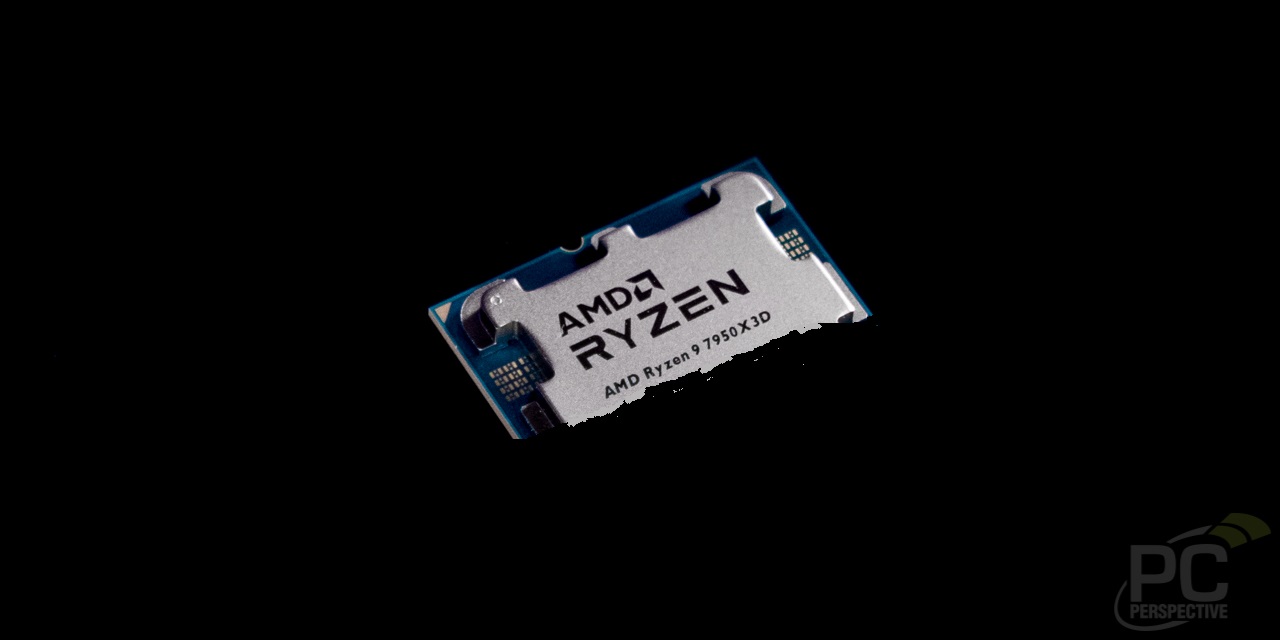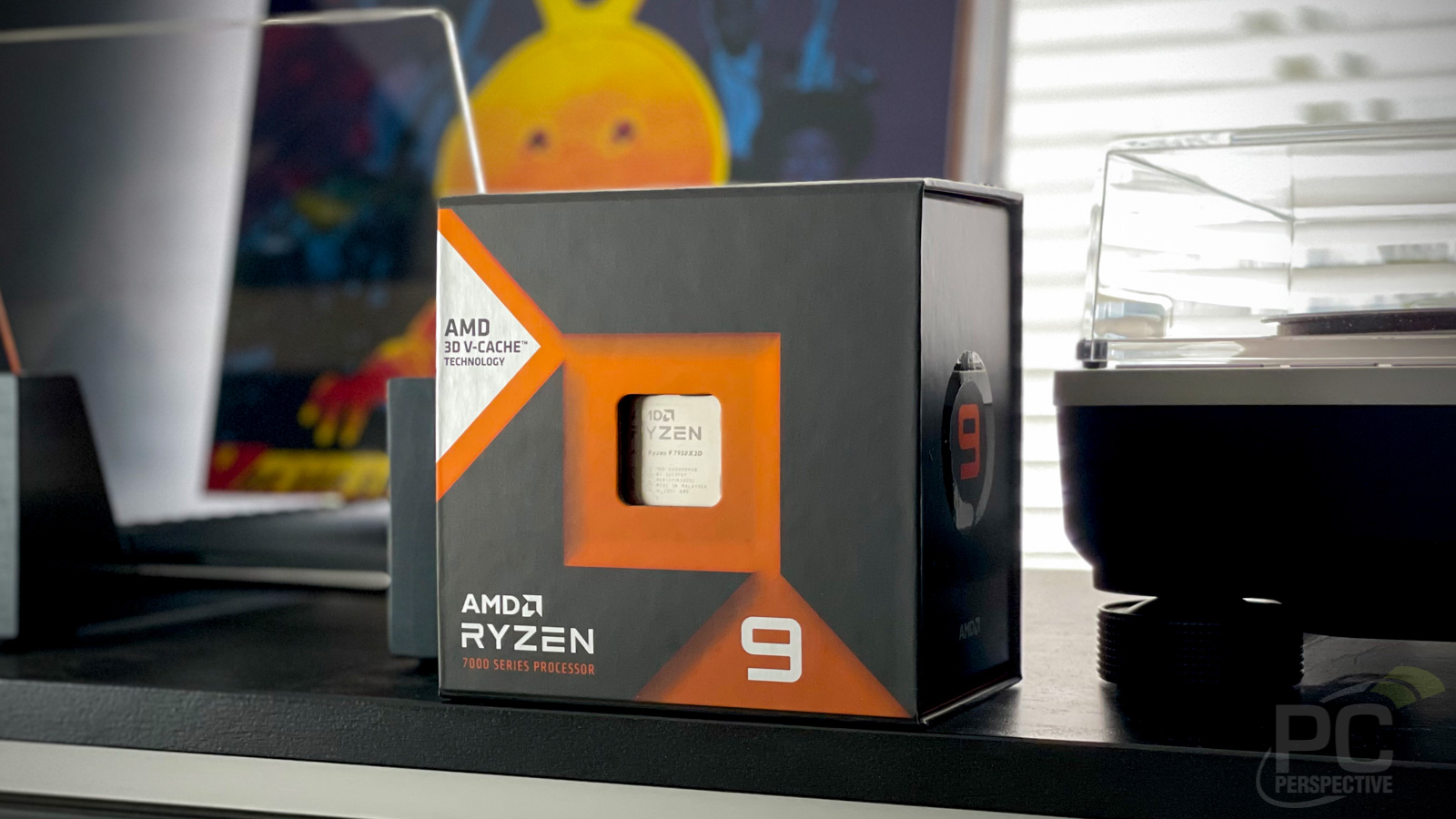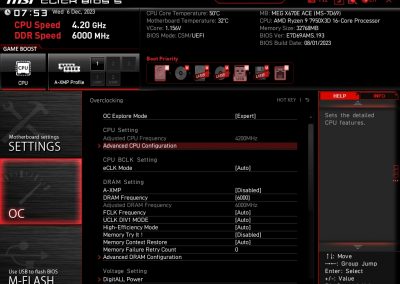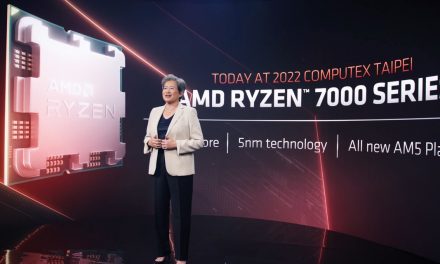Chopping AMD’s Fastest Desktop CPU in Half for Better Performance

If You Spent $699 For a 7950X3D at Launch, Don’t Despair
This will probably not come as news to most people, but Advanced Micro Devices, sometimes abbreviated as “A.M.D.”, has been a staple of the DIY enthusiast space for a very long time, with a history of processors that have often been faster than Intel’s CPU offerings. Products like the Am386 DX-40 or the Am486 DX4-120 come to mind. And who can forget about the Athlon?? PIII perf for hundreds less. And I mean 1999 hundreds, which is basically millions today.
But the preceding, potentially humorous paragraph doesn’t really do AMD justice when we consider that we are in the Ryzen era now, particularly when we are talking about the three biggest letters in the enthusiast CPU space: X, 3, and D. The massive L3 cache has been proven to make quite a big difference in many a gaming situation, and is particularly well-suited to 1080p gaming, in which the CPU can be more of a limiting factor than the GPU.
Modern computer components
And, conveniently, AMD offers X3D (3D V-Cache, a.k.a. a f*** ton of L3 cache) in multiple products, spanning two generations of CPUs and multiple motherboard platforms. If we confine ourselves to AMD’s latest socket, and thus to the Ryzen 7000 Series, we have the Ryzen 7 7800X3D, the Ryzen 9 7900X3D, and the flagship Ryzen 9 7950X3D. And, as good as the ~$350 Ryzen 7 7800X3D is, by all accounts, what happens if we go all out and spring for the Ryzen 9 7950X3D at nearly double the cost??
For one thing, you get a bit of a headache with regard to correctly configuring your Windows system to properly use the 3D V-Cache in the flagship part, due to the split personality of the R9 7950X3D. One CCD has that sweet, sweet 3D V-Cache, and the other does not. The inner turmoil is no doubt the stuff of compelling drama, but PC gamers could probably do without the added complexity involved with properly scheduling CCDs for gaming vs. compute workloads. I’ve whined about this before, and I’m whining about it again, here.
Get excited (about jumping though hoops to make 3D V-Cache work properly)
There was a time when the Ryzen 9 7950X3D was an exciting option, and that was the time before the Ryzen 7 7800X3D was available. Remember that delayed launch, when the 7900X3D and 7950X3D were the ONLY options with 3D V-Cache on AM5? But if you spent $699 at launch for the fastest gaming processor AMD had ever made (up to that point), only to see the reviews for the much less expensive (and less fiddly) Ryzen 7 7800X3D later on, don’t despair. Do what I did. Turn your 7950X3D into a (potentially better) 7800X3D! Ask me how!
Doing Something Stupid for Fun and Profit
Taking a $700 processor (these days closer to $600, but still), and intentionally disabling half of its 16 cores to potentially mimic the behavior of a $350-400 product may seem asinine, but it’s the greatest and best thing you will ever do with your 7950X3D, as long as you are just gaming with it. In my opinion, anyhow. Why? Because, as long as you are actually disabling the half without the V-Cache, you are taking away those scheduling headaches and configuration problems that can ruin your day, and using that fat stack of 3D V-Cache at all times!
And there is another thing to consider: the clock speeds of just the V-Cache CCD in the Ryzen 9 7950X3D are actually a little higher than the clock speeds of the Ryzen 7 7800X3D. If we reference Tom’s Hardware on this, we see that speeds of up to 5.25 GHz are possible on the V-Cache CCD, and checking the specs of the Ryzen 7 7800X3D (we weren’t lucky enough to receive a 7800X3D sample) we find that the R7 7800X3D tops out at 5 GHz. Those additional 250 MHz may not seem like a lot, but every bit counts when you’re trying to justify disabling a CCD in a 16-core processor.
In the case of the AM5 motherboard that I happen to have on hand, which is the MSI MEG X670E ACE, I went a few pages deep into the CPU settings and found the option to disable cores. After picking a CCD (CCD 1 in this instance, possibly in every instance) and turning it off, then saving changes and rebooting, I was pleased to discover that, not only did the system actually POST, but CPU-Z reported just 8-core/16-threads from the 7950X3D – and 96MB of L3. Success!
Now, if only this fake Ryzen 7 7800X3D could beat Intel’s fastest products… WAIT. IT CAN?? Just look at this chart below:
I’d say the “7800X3D” smoked Intel’s latest and greatest in this test, though to be fair Intel did have better 1% lows. If you care, the Intel processors were running DDR5-6400 memory, and the AMD processor was running DDR5-6000. Maybe that accounts for some of the 1% thing? Sure, this one benchmark could be a cherry-picked example, but, as they say, a picture is worth a thousand words. So I’ll include another image file of a chart below, in lieu of said thousand words:
Once again, the “7800X3D” has a massive lead in average FPS, but falls short of Intel with the 1% lows. A win for Intel! Except for that massive deficit. So, yeah. These are but two examples, and I’ll add my findings using the 3DMark Time Spy benchmark below, but you get the picture. 3D V-Cache is pretty amazing when you’re CPU bound.
Now, about 3DMark Time Spy. It is actually a 2560×1440 test, so it is conceivable that there won’t be quite as much of an edge for the X3D part:
Trying to show CPU scaling in a 2560×1440 test is an exercise in futility. It’s like RAM benchmarking. Often painful, rarely rewarding. You have to do it in a specific way, or the results with the same GPU are effectively tied, as they were in this case. Anyway, this result doesn’t really fit the narrative of this article, so let’s move quickly past this section and on to the conclusion.
Final Thoughts
If you have read this far, I applaud your good taste. Writing semi-serious articles like this for a non-existent audience would be sad. I hope someone out there read at least part of it, and didn’t just skim past the wall of text, look at the inadequacy of the benchmarking, and move on.
This article is about daring to be different. Daring to intentionally cut the core count of your flagship AM5 processor in half. Daring to admit that you’re envious of Ryzen 7 7800X3D owners, and that you regret buying the Ryzen 9 7950X3D. Let it all off of your chest. Be honest with yourself. It’s ok. This is a safe place. Besides, the “fake” Ryzen 7 7800X3D has higher clocks, which is worth something.
In closing, if motherboard vendors (and AMD) are willing to provide obscure settings, buried deep down in the pages of UEFI setup, that allow for cores to be turned off, then we owe it to ourselves to do just that. We have that freedom. It’s the American way. And I am an American. Also, AMD never sent us a Ryzen 7 7800X3D, and that’s what this is REALLY about.

















I got to the end of the article. Quite an achievement considering I’m also attempting to wriggle free of this damn straight jacket.
Holy s*** how much cocaine did you take before writing this?
This was a fun read, thank you, and do some more in the future.
Idk how many people I’ve told to turn off their second ccd. Note to OP you can use a program like process lasso to just pick which cores you use within the OS. You can also designate on a per program basis, and just make sure ccd1 is set for your gaming stuff and ccd2 can be kept on for everything else, that way you suffer even less bloat by keeping 8 cores and 16 threads designated for background processes, streaming, overlays, recording, explorer.exe, bla bla bla
Instead of turning off the 2nd ccd, change the frequency to target a lower clock then the 3D cores. Your performance will go up and you won’t loose any cores.
If only there was a way to do this in the OS, so that you could choose which CCD you wanted active with a hotkey.
Process Lasso will do the trick there. I set everything Windows is running to ccd1 and then I change games to ccd0 but you have to change both affinity and sets since some games ignore affinity and there are some that manage to ignore both but usually they are older and it’s not as important with them.
I’ve been overclocking my 7950x3d and I have the cores with 3d vcache running at 5.5ghz although I think I could push them further since my CPU temps after an hour under an all core load was only 56c. My “performance” cores are all overclocked to 5.8ghz and my infinity fabric is running at 3300mhz because my ddr5 is running at 6600mhz CL28-28-30-70 @ 1.437v. I think I can push it up to 7000mhz and remain stable but my 3rd attempt at better timing caused a stability issue and I used the 1usmus Hydra ram calculator to set the timings to “ideal” but my timings ended up being better.
Ill tweak them some more tomorrow, I’m absolutely positive I have headroom on the CPU and memory not to mention the GPU which is a MSI 4090 with +170 core +900 mem but I also have plenty of wiggle room there too and I think I can get away with +220 core without any kind of power mods and I’m not doing one of those with the garbage 12v power cable nVidia is using.
Hah! Ok so now my 7950x3d is bombing along at 5.4 CCD0 & 5.9CCD1.
DDR5 IS AT 6800mhz CL22-22-26-64 and riding that stability line like a champ considering the kit isn’t that great.
My 4090 is also stable at +310 core +1150 mem so it’s basically pegged at 3200mhz core anytime there is load and the max temp on it was 70c in the memory and that’s when my room was insanely hot from a 48 hour full load CPU/GPU stress test. Highest CPU temps were 67c with highest core temp at 58c!
I’ve passed the 20% performance gains I was originally after and I honestly don’t know how it’s stable lol
I remember trying to explain this to someone who wasn’t tech savvy and wanted the best the could buy in a build. Granted this was after the 7800x3d was out, but they just had to have the 7950x3d. Asked their intended use, which was gaming, and again suggested the 7800x3d. They weren’t having it, so just built it the way they wanted. About a month later they came back asking why I suggested the 7800x3d. Turned out certain expectations weren’t being met by the higher end chip mainly due to the differing ccd not optimally running games on the 3d cache ccd. Showed how to both disable and schedule task…he chose to disable the none 3d cache and eventually just got a 7800x3d.
7950x3d isn’t bad, but would certainly say it is better tailored to someone who has specific reasons of wanting it and willing to deal with fiddling with settings to get the most out of it.
7950x3d destroys the 7800x3d in all cases. I’ve yet to find a single game or program that can’t be made to run circles around a 7800x3d.
Hell the other day I was running a 720p to 4k ai enhanced upscale on some video while playing a game at a rock solid 4k120 lol. I used process lasso to lock the upscaler to ccd1 and the game to ccd0 (game was already but why not)… It’s genuinely impressive
Nice article, leave it to AMD to do the oddball stuff. All the way back to the Athlon XP-Ms having unlocked multipliers, to the Athlox X2 550s having 2 cores disabled, to this.
Yup, that’s one of the main reasons I went with a 14900k. I really liked the idea of the 7950X3D, but i was disappointed that the vcache was only on 8 of the 16 cores. I wondered if disabling the opposite CCD would work but I shouldn’t have to disable cores for it to operate as intended on a CPU that expensive. Also, I need more than 8 cores at times. So the 14900k was a great choice in my case. I love it.